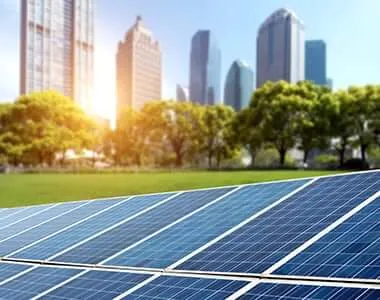Affordable 7.5 kW Solar Panel Prices - Go Green with Solar Energy
Understanding the Cost of 7.5 kW Solar Panels
As the world moves towards renewable energy sources, solar panels have gained significant popularity among homeowners and businesses alike. A 7.5 kW solar panel system is a common choice for those looking to reduce their energy bills and carbon footprint. But how much does it cost? In this article, we’ll explore the factors that affect the pricing of a 7.5 kW solar panel system, average costs, and potential financial benefits.
The Basics of a 7.5 kW Solar Panel System
A 7.5 kW solar panel system consists of several solar panels that together generate approximately 7,500 watts of electricity under optimal conditions. This size is suitable for larger households or small commercial setups, providing a balance between energy needs and installation costs. The number of panels needed will depend on the wattage of individual panels, typically ranging from 250 to 400 watts each.
Average Cost of Installation
The average cost of a 7.5 kW solar panel system can vary widely, typically falling between $15,000 and $25,000 before any applicable tax credits or incentives. This range accounts for differences in panel quality, installation costs, and geographical location. For example, labor costs in urban areas may be higher compared to rural regions. Additionally, the brand and type of solar panels chosen—whether monocrystalline, polycrystalline, or thin film—also influence the price, with monocrystalline panels often being the most expensive due to their higher efficiency and longevity.
Factors Influencing Cost
7.5 kw solar panel price

1. Quality of Panels Higher efficiency panels usually come with a higher price tag. Monocrystalline panels, known for their superior performance and aesthetic appeal, typically cost more than their polycrystalline counterparts. 2. Installation Costs Labor costs vary by region and can significantly affect the total price of a solar system. Proper installation is crucial for maximizing the efficiency and lifespan of the solar panels. 3. Incentives and Rebates Government incentives play a critical role in reducing the upfront cost. In many regions, homeowners can benefit from tax credits, rebates, and financing options that can lower the total out-of-pocket expenses.
4. System Design The complexity of the installation can also affect costs. Roof conditions, orientation, and shading issues may require customized designs that increase the overall price.
Financial Benefits
Investing in a solar panel system offers tangible financial benefits. Once installed, solar panels can significantly reduce monthly electricity costs, often paying for themselves within 5 to 10 years through savings. Furthermore, many regions offer net metering programs, allowing homeowners to sell excess energy back to the grid, providing an additional income source.
Moreover, solar systems increase property value. Zillow reports that homes with solar panels sell for approximately 4.1% more than comparable homes without them. This can be a significant factor for homeowners looking to sell in the future.
Conclusion
In conclusion, while the initial investment in a 7.5 kW solar panel system may seem substantial, the long-term savings and benefits make it an attractive option for many. By understanding the factors influencing pricing and taking advantage of available incentives, homeowners can not only reduce their energy costs but also contribute positively to the environment. As technology continues to improve, the future of solar energy looks promising, making now an excellent time to consider making the switch.
-
String Solar Inverter: The High-Efficiency Solution for Smart Solar EnergyNewsJul.14,2025
-
Revolutionizing Rooftop Energy with the Power of the Micro Solar InverterNewsJul.14,2025
-
Power Independence with Smart Off Grid Solar Inverter SolutionsNewsJul.14,2025
-
On Grid Solar Inverter: Powering the Future with Smart Grid IntegrationNewsJul.14,2025
-
Monocrystalline Solar Panels: High-Efficiency Power for the Future of Clean EnergyNewsJul.14,2025
-
Bifacial Solar Panel: A Smarter Investment for Next-Generation Energy SystemsNewsJul.14,2025







